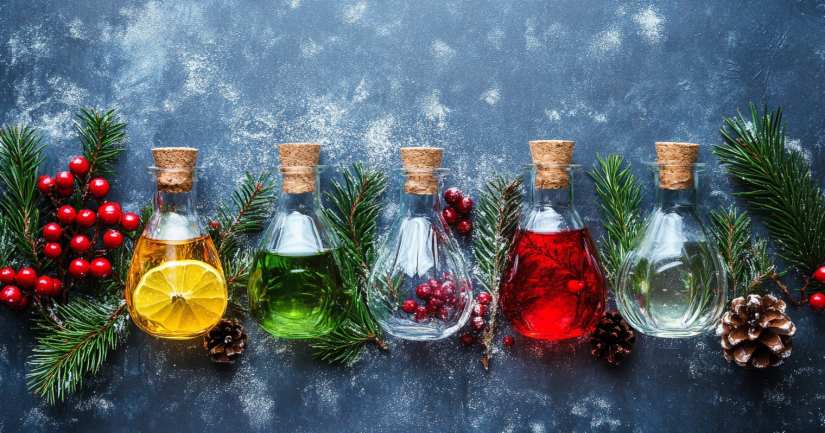
Christmas Science and Nature Quiz – Discover the Wonders of the Festive Season! Christmas Science and Nature Quiz enthusiasts, get ready to explore the fascinating connections between nature, winter wonders, and festive traditions! The holiday season is filled with spectacular natural phenomena, from the science behind snowflakes to the biology of Christmas trees. Have you ever wondered why holly and mistletoe are linked to Christmas? Do you know how animals adapt to the colder months?
Snow-covered landscapes create the perfect winter wonderland, but what makes snowflakes so special? Each flake forms when water vapor freezes into ice crystals in the clouds. The unique six-sided structures result from temperature, humidity, and atmospheric pressure variations. No two snowflakes are identical, making each one a miniature natural masterpiece. While many dream of a white Christmas, only certain climates provide the right conditions for snowfall during the holiday season.
Add a touch of curiosity to your holiday knowledge with the Challenge the Brain Christmas Quiz, or explore the art and literature side of the season in the Christmas Art and Literature Quiz – great for learning something new this Christmas! When you’re done exploring this topic keep the momentum going with A Christmas Carol Movie Quiz for a offbeat twist. You’ll smiling as you compare your results and maybe see offbeat life can be. Then saunter over to Spanish Christmas Quiz for more laughs and insight.
Take On the Christmas Science And Nature Quiz
The Science Behind a White Christmas
Weather also plays a key role in festive traditions. The winter solstice, occurring around December 21st, marks the shortest day of the year in the Northern Hemisphere. This astronomical event has influenced celebrations for centuries, with ancient cultures honoring the return of longer days. Understanding the science behind winter’s chill, frosty mornings, and the changing daylight adds a new layer of appreciation to the festive season.
Nature’s Role in Christmas Traditions
Plants and trees have long been symbols of Christmas, bringing greenery and life to homes during the coldest months. Evergreen trees, such as pines and firs, stay lush all year round, representing resilience and renewal. The tradition of decorating Christmas trees dates back to the 16th century in Germany and has since spread across the globe. Mistletoe, a parasitic plant, became associated with love and good fortune, leading to the well-known tradition of kissing beneath it. Holly, with its vibrant red berries and spiky leaves, is another iconic Christmas plant, symbolizing protection and prosperity.
Beyond plants, animals also play a role in festive folklore. Reindeer, famously linked to Santa Claus, are real Arctic creatures well-adapted to snowy environments. Their specialized hooves help them walk on ice, while their thick fur provides insulation against freezing temperatures. Many winter animals, such as bears and hedgehogs, hibernate during the colder months, while birds like robins remain active, often appearing in Christmas cards as a symbol of joy and renewal.
The Science of Festive Lights and Decorations
Twinkling Christmas lights brighten homes and streets during the holiday season, but how do they work? Modern LED lights use semiconductors to convert electricity into bright, energy-efficient illumination. Compared to traditional incandescent bulbs, LEDs last longer and consume less power, making them an eco-friendly choice for holiday decorations.
Candles, once the primary source of festive lighting, burn through a process called combustion, releasing heat and light. The warm glow of candles remains a key part of Christmas traditions, from Advent wreaths to Hanukkah menorahs. The physics of light, color reflection, and energy efficiency all play a role in the dazzling displays seen during holiday celebrations.
Test Your Christmas Science and Nature Knowledge!
Christmas traditions are filled with hidden scientific wonders and natural beauty. Whether you’re fascinated by the chemistry of snow, the biology of festive plants, or the physics of holiday lights, this Christmas Science and Nature Quiz will put your knowledge to the test.
How much do you really know about the history of Christmas, seasonal wildlife, and the natural elements that shape holiday traditions? Take the quiz now and uncover the scientific side of the festive season!
Get into the festive spirit with our Christmas Quizzes! Test your Christmas Trivia, then discover What You Want For Christmas!
Christmas Science And Nature – FAQ
Science and nature play a crucial role in Christmas celebrations by enhancing our understanding of winter phenomena and the environment. From the biology of evergreens to the physics of snowflakes, these elements enrich our appreciation of the season. They remind us of the beauty and complexity of the natural world, making festive traditions even more meaningful.
Christmas trees can contribute positively to the environment when sourced sustainably. Many farms practice replanting, ensuring that tree harvesting does not deplete resources. Additionally, real trees can be recycled into mulch, contributing to local ecosystems, while artificial trees, though reusable, often come from non-biodegradable materials. Choosing a sustainable option can help minimize environmental impact.
Winter weather encompasses various scientific phenomena, including snow formation, the behavior of ice, and the role of temperature in seasonal changes. Snowflakes, for instance, are formed from water vapor that crystallizes in the atmosphere. Each snowflake is unique due to the varying conditions it encounters as it falls. Understanding these processes can enhance our appreciation of winter’s beauty.
The festive season can impact wildlife and ecosystems in various ways. Increased human activity may disrupt local habitats, particularly in areas where trees are cut for decoration. However, certain holiday practices, such as creating bird feeders or planting trees, can also benefit local wildlife. Striking a balance between celebration and conservation is essential for protecting our natural world.
There are many engaging science experiments suitable for the Christmas season. For example, creating homemade snow by mixing baking soda and conditioner can delight children. Another fun project is making ice ornaments by freezing water in various shapes. These experiments not only entertain but also educate participants about scientific principles, making them perfect for holiday gatherings.
